-
Title (Dublin Core)
-
Improvements in the Pilots' Equipment
-
Article Title and/or Image Caption (Dublin Core)
-
Something New in Fashions
-
extracted text (Extract Text)
-
YEARS ago, our Army developed the first
aerial oxygen equipment, along with its
first high-altitude planes. This “free-flow”
system worked well enough in the earlier
days of military flying; the oxygen was fed
from the regulator into the mask, and the
pilot turned a handle to increase the flow as
he gained altitude,
But in a modern warplane, under combat
conditions, flyers have too much else to do.
That's why the Aero-Medical Laboratory at
‘Wright Field was set the task of designing
oxygen equipment that would “do its own
thinking.” The solution they have come
through with is a honey—the best oxygen
system in the world, according to the Air
Surgeon General, whose business it is to
know.
It's called the “demand” system, because
it automatically adjusts its flow to the de-
mand of the flyer's body at any altitude. It
gives him air without extra oxygen at
ground levels. As he ascends into thinner
atmosphere, it automatically begins to add
oxygen to the air he breathes. And, it in-
creases the proportion of oxygen as he goes
up, until at 30,000 feet—when he needs it
most—he's getting pure oxygen.
On night flight, simple adjustments vary
the working of the demand system so that
the flyer gets oxygen, in increasing quanti-
ties, all the way from the ground up. For,
research has shown that lack of oxygen is a
major cause of poor night vision, If oxygen
isn't used, night-vision efficiency drops with
altitude. Effects are noted as low as 5,000
feet.
The “thinking” oxygen equipment looks
complex but, in principle, it is relatively
simple. The heart of the apparatus is the
regulator, which gets its oxygen from spe-
cially designed, light but strong cylinders
through a supply line or “trunk line.” Air
comes into the regulator through an air port
which closes automatically at 30,000 feet.
From the ground to 30,000 feet, the propor-
tions of air and oxygen admitted to the
automatic mixing regulator are controlled
by a tiny aneroid bellows control, similar to
that in a barometer, operating two valves.
As the outside air pressure decreases with
altitude, one of these valves opens the oxy-
gen supply inlet farther and farther; the
other closes the air inlet correspondingly.
One of the main drawbacks of the old-
style equipment which the new regulator re-
places was its tendency to waste oxygen.
The older types supplied oxygen at all times.
But the automatic regulator now incorpor-
ates a device which cuts off the oxygen flow
every time the flyer exhales and renews it
with each inhalation. This device, a little
diaphragm working a valve, operates on the
differential of pressure induced by the re-
versal of the flyer’s breathing. When he
breathes in, the diaphragm flips to one side |
and a little lever linkage opens the oxygen |
valve. But when he starts to exhale, the |
pressure moves the diaphragm and thus |
shuts off the oxygen-flow valve. |
Sometimes, in flight, the pilot may want a |
momentary “shot” of oxygen. He gets this
through a flip of the finger on the auto-mix |
button of the regulator. This cuts off the
air flow when turned to the “off” position
and thus gives pure oxygen at any altitude. |
If, for some reason, the mechanism should
fail to function, there is another little handle
labeled “Emergency”; this by-passes the en- |
tire regulator mechanism and causes pure |
oxygen to flow directly into the mask feed |
hose.
-
Contributor (Dublin Core)
-
Stewart Rouse (writer and illustrator)
-
U. S. Army Air forces (photos)
-
Language (Dublin Core)
-
eng
-
Date Issued (Dublin Core)
-
1943-11
-
pages (Bibliographic Ontology)
-
77-80
-
Rights (Dublin Core)
-
Public Domain (Google digitized)
-
Archived by (Dublin Core)
-
Matteo Ridolfi
-
Alberto Bordignon (Supervisor)
 Popular Science Monthly, vol. 143, n. 5, 1943
Popular Science Monthly, vol. 143, n. 5, 1943
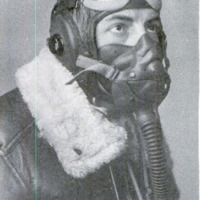 Schermata 2022-10-18 alle 11.49.55.png
Schermata 2022-10-18 alle 11.49.55.png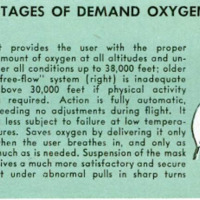 Schermata 2022-10-18 alle 11.50.01.png
Schermata 2022-10-18 alle 11.50.01.png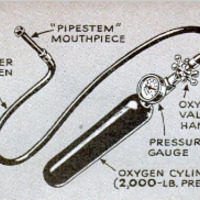 Schermata 2022-10-18 alle 11.50.06.png
Schermata 2022-10-18 alle 11.50.06.png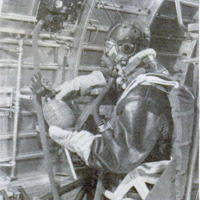 Schermata 2022-10-18 alle 11.50.12.png
Schermata 2022-10-18 alle 11.50.12.png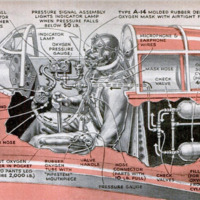 Schermata 2022-10-18 alle 11.50.19.png
Schermata 2022-10-18 alle 11.50.19.png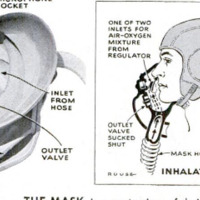 Schermata 2022-10-18 alle 11.50.32.png
Schermata 2022-10-18 alle 11.50.32.png Schermata 2022-10-18 alle 11.50.37.png
Schermata 2022-10-18 alle 11.50.37.png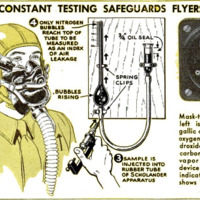 Schermata 2022-10-18 alle 11.50.43.png
Schermata 2022-10-18 alle 11.50.43.png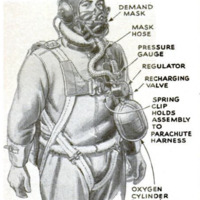 1.png
1.png








